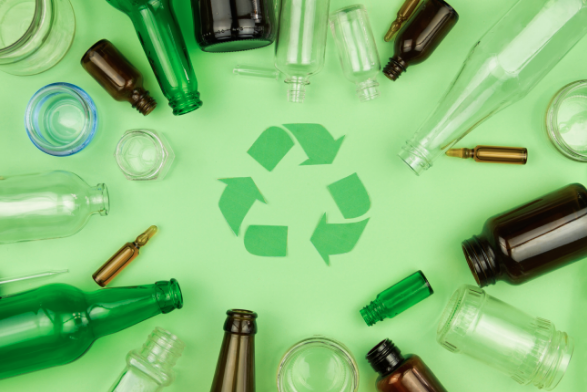However, e-waste recycling is a long, tiresome task as it involves an extensive sorting process. After that, the segregated waste is respectively recycled and converted into a whole new raw material. Nevertheless, not all e-waste is being recycled. Experts have estimated that only 12.5% of the total e-waste is recycled in the U.S only. Therefore, many startups like YFC are developing cutting-edge technologies to collect waste from around their operational vicinity and then recycle them as appropriate. Today, in this blog we are going to expound upon how the e-waste industry is growing into an opportunity and can potentially aid the zero-waste agenda through various recycling practices.
How Is E-Waste Recycled?
E-waste recycling is an extensive process that involves careful sorting and segregating the waste into different categories. And, since each device consists of plastics, glass, metals, or harmful chemicals, the workforce operates in a supervised environment to ensure the safety of all. Once all the devices are sorted into different categories, they are disassembled and respectively distributed to their category for further recycling. From there, the waste is shredded into tiny pieces to be converted into raw material. This raw material is then used for manufacturing other valuable products.
E-Waste: A Growing Problem Or An Opportunity?
Although recycling e-waste is not hard, many individuals end up discarding their electronic waste in the trash. From there it will end up at the landfills, becoming a major contributor to GHG emissions. That’s how e-waste becomes a problem, causing global warming. Such is the missed opportunity of extracting more out of your e-waste. If e-waste is carefully recycled, it becomes a great opportunity to build a raw material that can be used to manufacture new products: creating business opportunities and reducing the burden on the landfills. Either way, it brings each electronic device’s utility to a complete full circle, bringing the circular economy to life. Many businesses have been established by capitalizing on a growing problem by turning it into an opportunity. Therefore, recycling e-waste can become an opportunity if you act upon it now! Otherwise, it’s only going to add up to the stack of already existing problems.
Saving The Planet With E-Waste Recycling
E-waste recycling reduces environmental pollution and can potentially save the planet. And since e-waste consists of toxic substances, it cannot be carelessly discarded in the trash. These toxic substances include mercury, lead, cadmium, beryllium, chromium, and chemical flame retardants. This is why, when e-waste ends up at the landfills, these chemicals can seep into the soil or the atmosphere, and pollute the soil and air. When the soil is polluted, the possibility of it compromising the groundwater becomes inevitable. And the polluted groundwater means that it is affecting life on earth. Therefore, removing e-waste from landfills is as important as saving the planet.
Conclusion
We cannot stop tech from evolving, however, we can control how we discard our e-waste. According to research, it was estimated that in 2019, 54 million metric tons of e-waste was produced worldwide. This number has only been increasing annually as almost only 20% of it is documented, collected, and recycled. Moreover, the way the electronic devices are becoming obsolete with an updated version every once or twice a year, the e-waste will grow. If all e-waste is recycled, it can grow opportunities for businesses to collect e-waste and recycle it into raw material. YES Full Circle offers cutting-edge technology to help you track your waste as we recycle it and also aids the environment by replacing natural resource consumption with recycled raw materials making it more sustainable and economical. Interested in partnering with a company that can benefit you and the environment at the same time? Click right here.


No comments:
Post a Comment